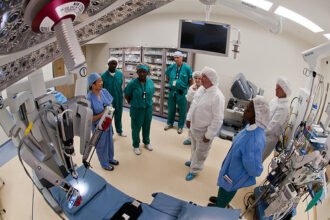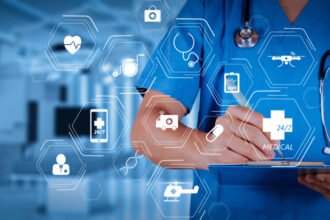There are many changes taking place across the health care landscape ? and technology is paving the way for more than a few of them. According to the WHO and other public groups, the demand for nurses will continue to grow faster than any other field through the 2020s. That means a greater need for tools that can help nurses do what needs doing more efficiently and while using fewer resources.
Here are five technologies impacting nurses for the better, today, and a few that will do so in the near future.
1. Health Care Apps and Telehealth
There are lots of persistent pain points in the modern medical landscape ? including too few nurses and too many patients to see, patients in remote locations, and patients whose condition makes it difficult or impossible to travel.
Health care apps and telehealth aim to ease these problem areas for nurses and patients alike. Telehealth can be as simple as an audio-visual interface so patients and attending nurses can check in with each other and share updates, new symptoms, and determine whether another visit is recommended. It also helps nurses and other hospital staff stay safe by keeping patients at home if their conditions can be self-managed, but who might otherwise pose a risk should they come in for a consultation.
Emerging health care apps show even greater potential. Some startups promise that their apps, equipped with machine learning, could soon outdo flesh-and-blood nurses by using the cameras, microphones, and sensors on smartphones and wearables to check photos of a patient’s skin against known cases of skin conditions and even make diagnoses based on what a patient’s cough sounds like.
More study is needed, such as the trials being conducted at the Cleveland Clinic to study the success rate of respiratory diagnoses made via mobile app. But the pieces are moving into place for a more efficient health care system and an easier way for nurses to prioritize patient visits and check in more regularly with some of their charges who suffer from chronic conditions.
2. Automated IVs
Nurses are some of the most compassionate and competent people you’ll meet anywhere. But they also have many demands placed on their time and attention ? and that means an omnipresent risk of human error.
Automated IVs have emerged as an ally in patient care and a way to eliminate some of the potential for error. Whether the IVs supply controlled dosages of medications or nutritional supplements, nurses are frequently tasked with changing out IV drips or altering dosages throughout the day ? whether on a fixed schedule or according to the patient’s present condition.
Thanks to automation, IV dosages can be scheduled with greater accuracy or automatically dispense the needed medication based on medical feedback.
3. Electronic Health Records (EHRs)
It would be difficult to understate the degree to which electronic health records have made daily life easier on nurses ? and the positive impact they’ve had on our quality of care in general.
Having quick digital access to the most recent updates about a patient means nurses don’t have to wait for physical copies to arrive. With modern health care management software, nursing staff can even receive automated alerts if a procedure is scheduled, an action is taken, or a medication is prescribed which conflicts with other information on their health record ? such as an allergic reaction to the proposed treatment or a pre-existing condition that might’ve been missed by staff.
4. Patient-Generated Health Data
Patient-generated health data, or PGHD, is data gathered by the patient using wearable technology or mobile or in-home devices. According to HealthIT.gov, patient-generated data has the potential to do a world of good in health care and can help support decision-making among nurses and other office, clinic, or hospital staff:
- PGHD can help fill in health data gaps between patient visits.
- Patient-generated data can help corroborate findings and diagnoses.
- Having access to patient-generated data supports greater information sharing between departments and specialists.
Perhaps most importantly for nursing staff, giving patients a way to measure and observe their own health data helps make progress more visible for them. If patients can see their data points improving over time, they’ll have even more incentive to follow nurses’ instructions for in-home care and to take their prescribed medications on time.
5. Real-Time Location Awareness
We’re all familiar with outdoor location awareness systems like GPS. Real-time location systems provide similar functionality for indoor operations, giving hospitals and their staff a way to keep “eyes on” all of their assets and patients at once, no matter where they might go on a medical campus.
Equipment such as monitors, IV stands, gurneys, rollable beds, and even canes and walkers can all be tracked via radio frequency tag. And if a nurse or another member of the staff needs a blood pressure machine or anything else, they can query the location of the nearest equipment that’s not in use, saving time and frustration. This adds peace of mind for nursing staff and potentially helps keep costs down for health care systems whose equipment is in the habit of wandering off.
Patients and caregivers alike can benefit from RFID location tags, too. One of the major responsibilities and risks of being a nurse is that they frequently find themselves in the company of unpredictable and potentially violent patients. The ability to tag patients and receive alerts if they leave their beds could help prevent a lot of frustration ? and worse.
Conclusion
This was just a quick look at a few of the technologies making life better for millions of nurses and their patients. The future will see even more innovations as health care markets expand, we learn how to meet rising demands for nursing talent, and we find new ways to augment their efforts using technology.









